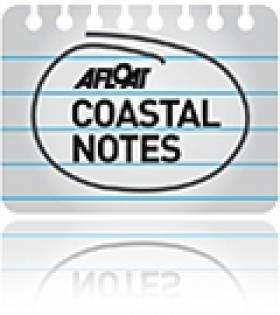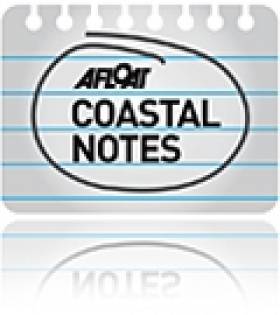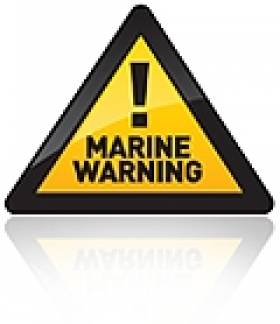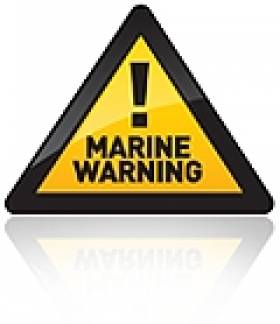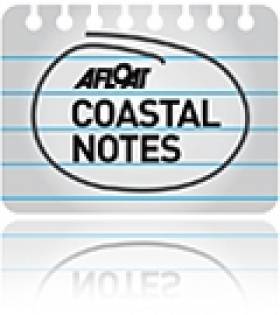Displaying items by tag: Fastnet Oil & Gas
Fastnet Plans Offshore Drilling Programme
#Oil&Gas - Fastnet Oil & Gas has published its first set of annual results as a public company, declaring its intention to develop an offshore well drilling programme for Ireland by 2015.
Earlier this summer the company was awarded a new licensing option at East Mizzen in the North Celtic Sea off the Cork coast.
Previously it executed its exclusive option to farm into the Deep Kinsale Prospect beneath the Kinsale Head Gas Field, and earlier said it would spend more than €20 million on the Celtic Sea's biggest ever seismic study.
Now Fastnet is in talks to farm out its prospects to major international oil and gas firms in other to monetise its assets, as The Irish Times reports.
#DeepKinsale - Fastnet Oil & Gas believes that its Deep Kinsale Prospect in the Celtic Sea could hold an incredible bounty of more than two billion barrels of oil.
As Proactive Investors reports, the Irish-headed oil exploration firm says an independent assessment of its prospect in the waters south of Cork estimates 2.365 billion barrels of oil in place.
Fastnet executed its exclusive option on the prospect earlier this year, and recently completed a 3D seismic survey of the area, the data from which will enable the company to identify oil reservoir 'sweet spots' for the best drilling results.
“Deep Kinsale is a large anticlinal structure, which has the potential to contain a significant oil accumulation directly beneath the producing Kinsale gas field and the two platforms, in the Celtic Sea,” said John Craven, founding Fastnet shareholder.
“This new 3D seismic is a key de-risking component necessary for the planning of an optimal drilling campaign."
The full operational update from Fastnet Oil & Gas is available HERE.
As previously reported on Afloat.ie, Fastnet Oil & Gas has been awarded a new licensing option elsewhere in the Celtic Sea in the area know as East Mizzen.
Marine Notice: 3D Seismic Survey in Celtic Sea Update
#MarineNotice - CGG, on behalf of Fastnet Oil & Gas, is scheduled to carry out a full 3D seismic survey at Mizzen Basin in the Celtic Sea off the south-west coast beginning this month.
Details of this survey - as part of Fastnet's option on the Deep Kinsale Prospect - were previously reported on Afloat.ie but some details have been amended since.
The survey is expected to run for 35 days, subject to weather.
For full details - including co-ordinates of the work areas - see Marine Notice No 22 of 2013, a PDF of which is available to read or download HERE.
Fastnet Awarded 'East Mizzen' Option In Celtic Sea
#Oil&Gas - Fastnet Oil & Gas has been awarded a new licensing option in the North Celtic Sea off the Cork coast.
The East Mizzen option covers a number of blocks in the Mizzen Basin, plus the western end of the North Celtic Sea Option, covering a tittle area of 1,155 sq km and contiguous with the previously awarded Mizzen option.
The 18-month option requires the reprocessing of a minimum of 400km of existing 2D seismic data, which has indicated the presence of light oil in some areas.
Fastnet managing director Paul Griffiths commented: "We are delighted to have added to our inventory of material prospective structures in the Mizzen area ... This has allowed us to capitalise on the interest being shown by the industry in our farm-out process in this particularly under-explored, yet highly prospective, basin.
"It has also allowed us to maximise the value of our on-going 3D seismic acquisition by creating 'running room' for potential farminees that have identified the Mizzen Basin as a new emerging shallow water exploration province offshore Ireland."
Earlier this year, as reported on Afloat.ie, Fastnet executed its exclusive option agreement to farm into its nearby Deep Kinsale Prospect, with plans to drill the prospect in 2014.
Marine Notice: 3D Seismic Surveys In Celtic Sea
#MarineNotice - Further to the recent notice of a 2D seismic survey in the Atlantic waters of the Irish continental shelf, Marine Notice No 14 of 2013 advises mariners of two full 3D seismic surveys in the Celtic Sea off the south coast.
CGG will be conducting the surveys on behalf of Fastnet Oil & Gas as part of its option on the Deep Kinsale Prospect, as previously reported on Afloat.ie.
The works are expected to commence in later this month and are expected to last around 50 days, subject to weather, beginning with the Deep Kinsale survey followed by the Mizen survey.
The seismic vessel SR/V Vantage (Call sign LMHY3) is scheduled to carry out the work. The vessel will be towing 10 cables, each 6km long with 100m separation for a total width of 900m, at a depth of seven metres. The vessel will also tow two source arrays, each made of three subarrays, each with a width of 16m and at a depth of six metres.
The seismic vessel will be accompanied by support vessel M/V Oms Resolution (Call sign HP5135) and chase vessel M/V Stormbas II (Call sign V4EM2).
In addition, as part of the Deep Kinsale survey, a second 3D seismic vessel M/V Artemis Angler (Call sign LAGU7) will assist in an undershoot of the Kinsale Alpha and Bravo platforms. The two 3D seismic vessels will sail in parallel at the same speed, one on each side of the platforms using streamers. The undershoot aspect of the acquisition is expected to last two to three days.
The seismic vessels will be restricted in their ability to manoeuvre whilst carrying out the surveys and all other vessels are requested to give these operations a wide berth. All project vessels will be listening on VHF Channel 16 throughout the project.
All vessels, particularly those engaged in fishing, are requested to give the SR/V Vantage, the M/V Artemis Angler and their towed equipment a wide berth and keep a sharp lookout in the relevant areas.
Full details of co-ordinates of the survey areas are included in Marine Notice No 14 of 2013, a PDF of which is available to read or download HERE.
Fastnet Oil Takes Option On 'Deep Kinsale Prospect'
#Oil - Fastnet Oil & Gas has executed its exclusive option agreement to farm into its Deep Kinsale Prospect beneath the Kinsale Head Gas Field.
The option agreement with Petronas subsidiary Kinsale Energy is confined to geological formations below 4,000 feet subsea. Fastnet will conduct a 3D seismic survey over 500 sq km in the Celtic Sea prospect by the end of the year as well as complete necessary geological and engineering studies.
The agreement also gives Fastnet an exclusive option to test the geologically similar Purbecko-Wealden reservoirs productive in Barryroe, a prospect that has proven a bounty for Providence Resources.
Fastnet chair Cathal Friel said: "We are delighted to have added an exclusive option to farm into and potentially drill the Deep Kinsale Prospect in 2014.
"It represents an attractive addition to our Irish portfolio as we have long held a belief that Deep Kinsale offers the potential to yield up another significant hydrocarbon discovery offshore Ireland. This belief has been further strengthened by the successful appraisal of Barryroe in 2012, which is geologically analogous to Deep Kinsale.
"We greatly look forward to working in close cooperation with our colleagues at Kinsale Energy, as we collectively seek to de-risk the prospect for drilling."
As previously reported on Afloat.ie, Fastnet Oil & Gas announced in December its plans to spend more than €20 million on the Celtic Sea's biggest ever seismic study on blocks off the south coast which were drilled in the 1980s and later abandoned.
New techniques in the oil industry are now allowing previously unviable resources to be extracted, as fellow prospectors Petrel Resources are planning to do off the Kerry coast.
Fastnet Oil Plans Celtic Sea's Biggest Seismic Survey
#OIL - Fastnet Oil & Gas will spend more than €20 million on the Celtic Sea's biggest ever seismic study, the Irish Independent reports.
The company was recently awarded two blocks in the waters south of Ireland which were drilled in the 1980s and subsequently abandoned.
But new techniques in the oil industry are allowing previously unviable resources to be extracted - as Petrel Resources are planning to do off the Kerry coast, following the discovery of enormous oil reserves in the Porcupine Basin.
And the Celtic Sea in particular has already attracted attention after Providence Resources announced its discovery of oil reserves at its Barryroe prospect potentially worth billions of euros.
Fastnet Oil, chaired by Cathal Friel, is currently in discussions with major oil groups with a view to sharing the costs of the seismic survey.

